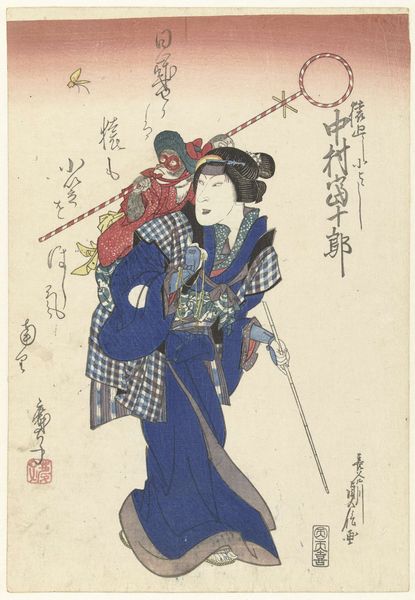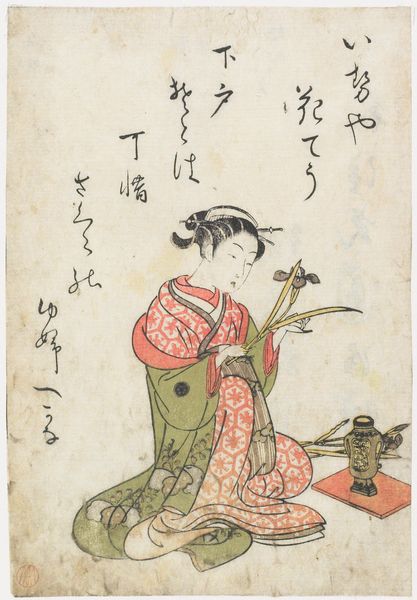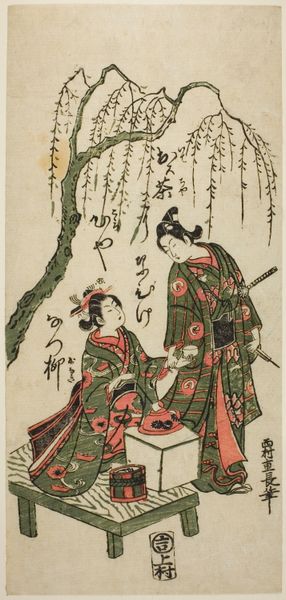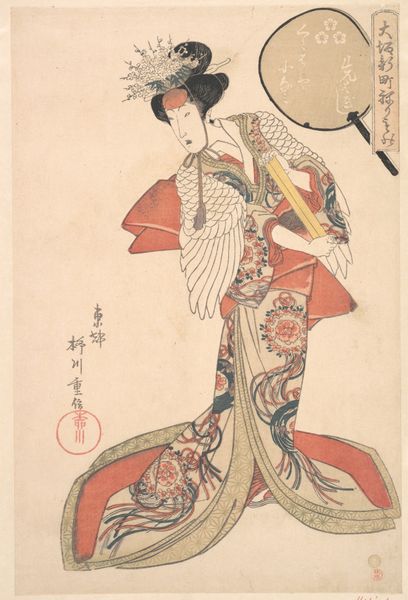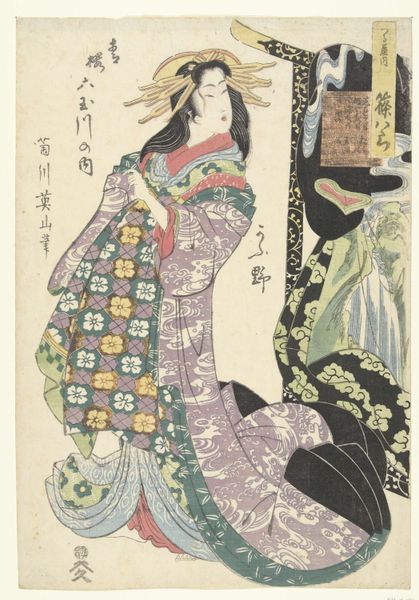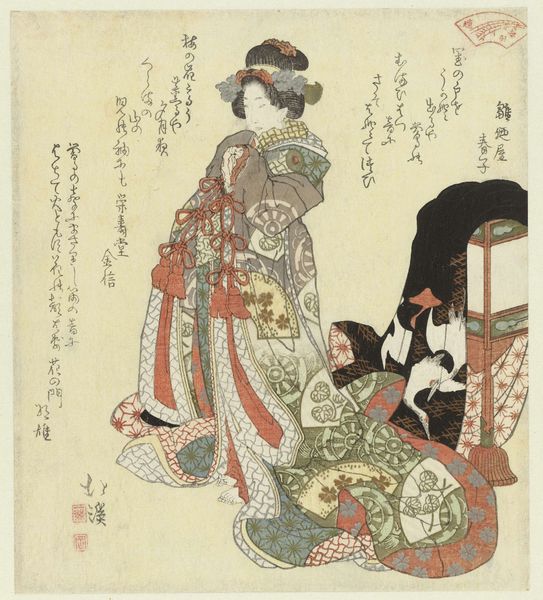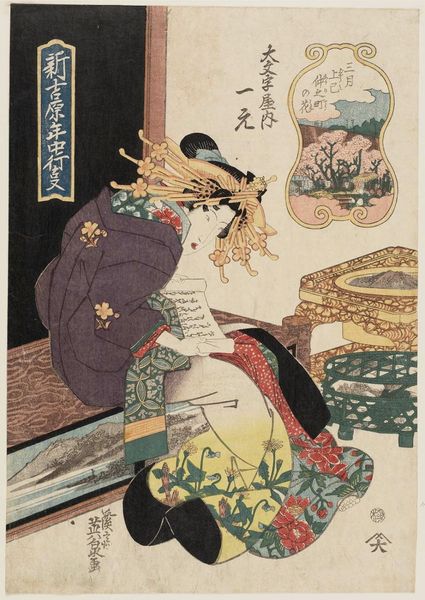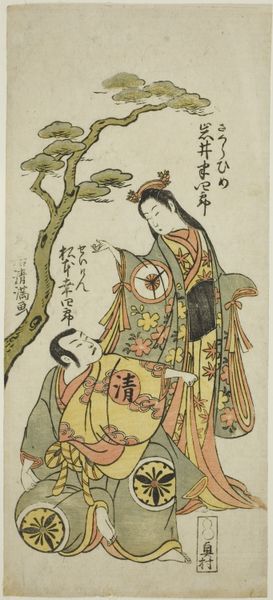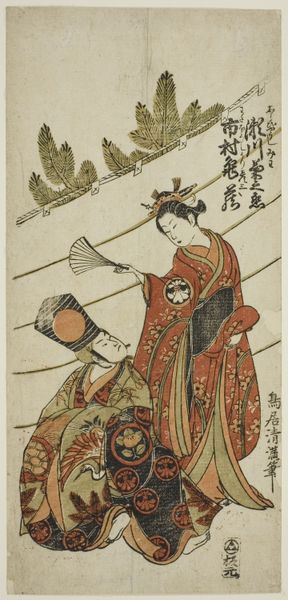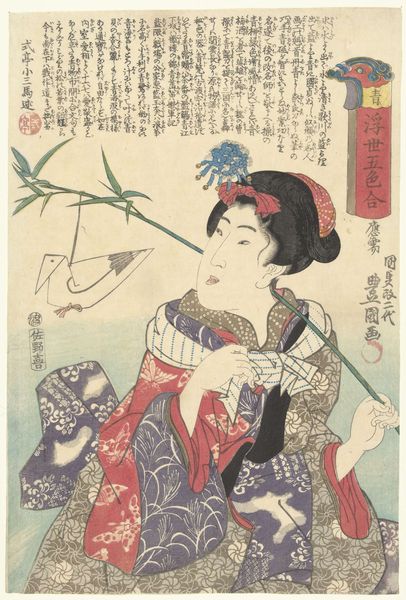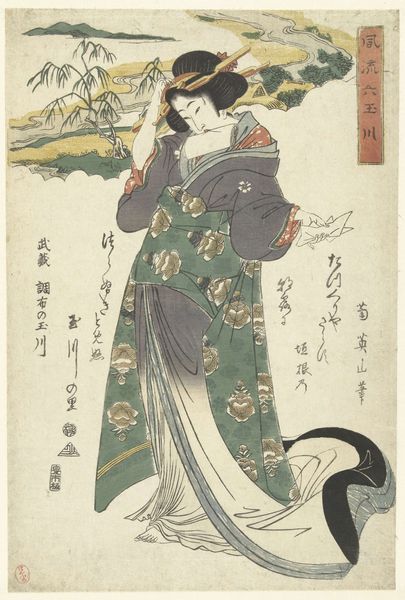
De acteur Arashi Tokusaburo verandert zijn naam in Arashi Kitsusaburo II en vertolkt de rol van Hyogonomoki Yorimasa uit het toneelstuk Yorimasa nue monogatari 1822
0:00
0:00
shunkosaihokushu
Rijksmuseum
print, woodblock-print
#
portrait
#
narrative-art
# print
#
asian-art
#
ukiyo-e
#
figuration
#
woodblock-print
#
cartoon carciture
Dimensions: height 375 mm, width 257 mm
Copyright: Rijks Museum: Open Domain
Editor: This woodblock print by Shunkōsai Hokushū from 1822 depicts the actor Arashi Tokusaburo in the role of Hyogonomoki Yorimasa. It’s so dynamic! The figure with the bow is full of movement, and there’s this circular portrait above him. What do you see in this piece, beyond the immediate visual narrative? Curator: What strikes me is how this image serves as a complex representation of identity within a highly structured social environment. The actor is not just portraying a role; he’s also publicly declaring his change of name. This act in itself can be seen as a challenge to the rigid societal norms, a subtle form of rebellion played out in the theatrical and artistic space. Consider the politics embedded in naming and performance here; how does one renegotiate identity within existing power structures? Editor: That’s interesting. I hadn’t thought about it in terms of social commentary. The print is also visually divided, with the active archer below and the static portrait above. Does that division play a role in the statement being made? Curator: Absolutely. It highlights the duality inherent in the actor's identity—the character he embodies and his own self-fashioning through the name change. The upper portrait could signify the established persona, almost like a sanctioned role, whereas the lower, more dynamic figure suggests the potential for change, agency, and the unsettling of expectations. It speaks to a wider discourse around the performance of self in Edo period Japan. How might this print be understood in the context of censorship of Kabuki theatre and its actors? Editor: I guess it reveals a lot more complexity than just a portrait of an actor. Thinking about identity as performance within social constraints gives me a whole new perspective. Curator: Exactly. By viewing the print through the lens of performance and identity, we begin to unlock deeper insights into the social and political landscape of its time. Editor: This has really broadened my understanding, connecting the artwork to broader social and political contexts. It’s made me think about how art can be both a reflection of and a challenge to society.
Comments
No comments
Be the first to comment and join the conversation on the ultimate creative platform.
